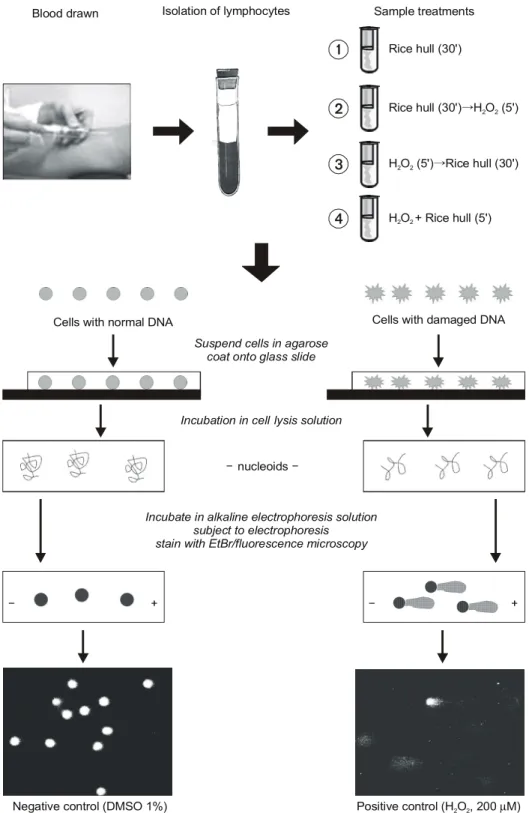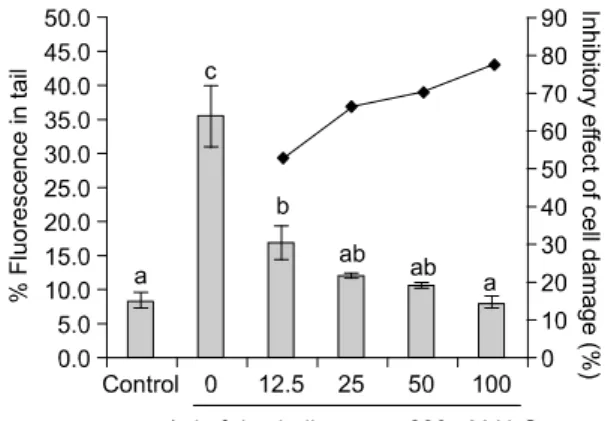2004; 9(2): 92-97
INTRODUCTION
Rice is the principal cereal in Asia, some countries in Africa and Latin America. More than one million tons of rice hulls have been produced annually in South Korea after processing of rice. However, rice hulls are wasted or destined to undervalued uses. Cur- rently, agricultural and industrial residues are attrac-
tive sources of natural antioxidants.
1)The extraction of antioxidant compounds from residue materials such as hulls, seed coats, peels, grape seeds, olive rape, and cocoa by product has been reported.
2)In general, hulls play the major role in the defense of the plant seeds and together with bran fractions concentrate most tannin; therefore, the antioxidant activity of these fractions is higher than that of seeds.
1,3)Rice hull has been also reported to contain phenolic compounds Rice hull is known to contain an antioxidant defense system to protect rice seed from oxidative stress. The aim of this study was to evaluate the effect of methanol extract of rice hull on oxidative DNA damage induced by H
2O
2in human lymphocytes. Cells incubated in medium with 1 % DMSO (negative control) or with various concentration of rice hull extracts (12.5, 25, 50, 100μg/ml) for 30 min at 37
oC were further treated with H
2O
2(200μM) as an oxidative stimulus for 5 min on ice. Oxidative damage was evaluated by Comet assay (single-cell gel electrophoresis) and quantified as % tail DNA.
Cell viability measured by trypan blue exclusion test was above 95% for all treatments.
An increased oxidative DNA damage by H
2O
2expressed by % tail DNA was significantly inhibited by pre-incubating with rice hull extracts in a dose dependent manner. When human lymphocytes were post-incubated with rice hull extract for 30 min after exposure to H
2O
2or incubated with rice hull and H
2O
2simultaneously, the protective ability of the rice hull was not changed. These results indicate that rice hull supplementation to human lymphocytes followed by H
2O
2treatment inhibited damage to cellular DNA, supporting a protective effect of rice hull against oxidative damage.
ꠏꠏꠏꠏꠏꠏꠏꠏꠏꠏꠏꠏꠏꠏꠏꠏꠏꠏꠏꠏꠏꠏꠏꠏꠏꠏꠏꠏꠏꠏꠏꠏꠏꠏꠏꠏꠏꠏꠏꠏꠏꠏꠏꠏꠏꠏꠏꠏꠏꠏꠏꠏꠏꠏꠏꠏꠏꠏꠏꠏꠏꠏꠏꠏꠏꠏꠏꠏꠏꠏꠏꠏꠏ Key Words: Rice hull extract, DNA damage, Comet assay, Hydrogen peroxide,
Lymphocytes
Effect of Rice Hull Extracts on Oxidative DNA Damage in Human Lymphocytes
Kyung-Im Jeon
1, Hae-Ryong Park
2, Seung-Cheol Lee
2and Eunju Park
11


